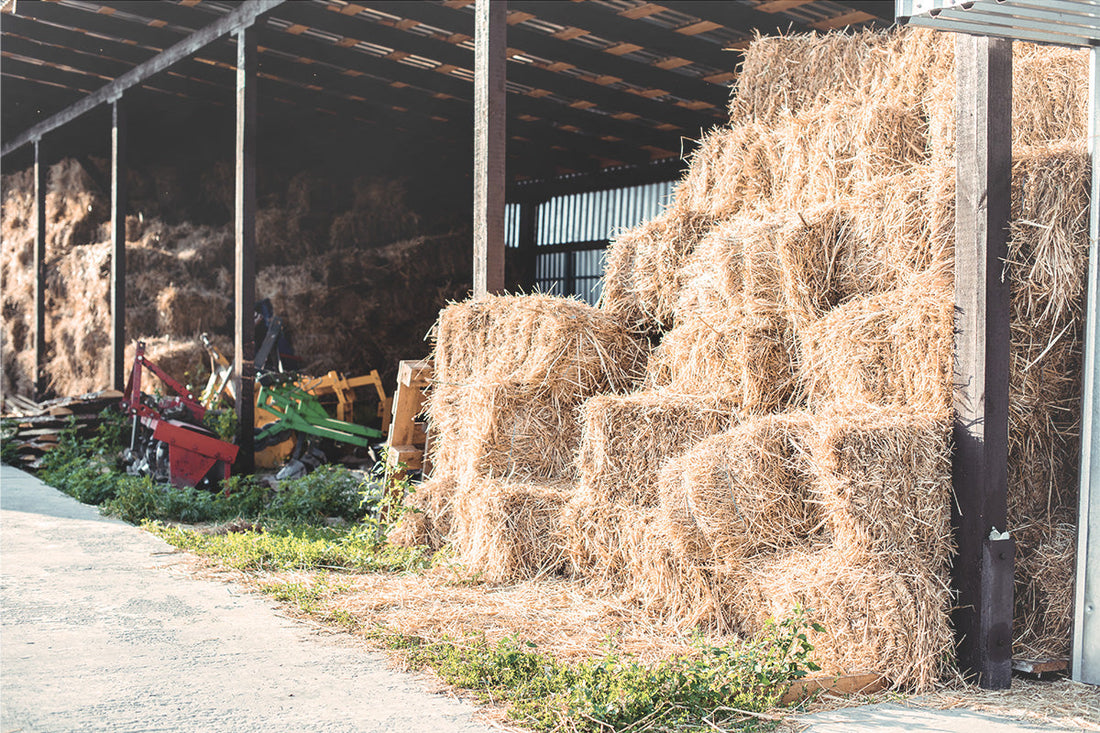
The Reality of Switching to Pellets from Hay
Share
As livestock owners, the choice of feed is one of the most crucial decisions we make. Traditionally, hay has been the go-to for many, but in recent years, pellets have gained traction as a viable alternative. However, switching from hay to pellets involves more than just deciding on nutrition—it impacts costs, storage, sourcing, and delivery logistics. Here's a deep dive into the reality of making the switch, with insights from Medalist Feed.
1. Cost: Is It Worth the Switch?
The price difference between hay and pellets can be significant, depending on your location, vendor, and livestock needs. Hay prices fluctuate due to seasonal availability, weather patterns, and regional droughts, making it an unpredictable expense. Pellets, on the other hand, are generally more stable in pricing.
- Hay: Prices can spike during droughts or after a poor harvest, making budgeting difficult.
- Pellets: While the initial price per ton may be higher than hay, pellets often provide more nutrition per pound, requiring less feed overall.
Key takeaway: Pellets may be more cost-effective in the long run due to consistency in pricing and potential feed volume reduction.
2. Storage: Space-Saving vs. Bulk Handling
One major advantage of pellets is the amount of space they require. Hay bales can take up considerable barn space and need protection from the elements to prevent mold or spoilage.
- Hay: Storing large bales requires significant space, a dry environment, and often specialized equipment.
- Pellets: These come in manageable bags or bulk quantities, easily stored in a smaller, controlled environment.
Key takeaway: If storage is a challenge, pellets are a more compact, manageable solution.
3. Delivery: Vendor Options and Availability
Sourcing hay can be challenging, especially in regions affected by weather conditions. Droughts, wildfires, and poor growing seasons can reduce supply, leading to higher shipping costs for distant sourcing.
- Hay: Finding quality hay can be a seasonal challenge, with higher costs for transportation.
- Pellets: Pellets can be sourced from various regions, with more widespread vendor availability and reliable delivery options.

Key takeaway: Pellets provide more flexibility with vendors and delivery options.
4. Pain Points of Sourcing Hay: Why Consider the Shift?
For livestock owners dependent on hay, there are several challenges that make pellets an appealing alternative.
- Seasonal Fluctuations: Weather can heavily influence hay availability.
- Transportation Costs: Shipping costs can rise, especially if sourcing hay from far regions.
- Quality Concerns: Mold, dust, and inconsistent quality are common problems with hay.
Key takeaway: Switching to pellets may offer a more consistent and reliable feed option with fewer sourcing risks.
Conclusion
Switching to pellets from hay requires careful consideration of multiple factors: price, storage, delivery, and vendor reliability. While the initial investment might seem steep, the long-term benefits—such as consistency, ease of storage, and fewer sourcing headaches—make pellets an attractive option for many livestock owners.
Key takeaway: For those tired of the unpredictability of hay, pellets could be a practical and cost-efficient alternative.


2 comments
Great question! Our product is priced slightly higher because we use premium ingredients and special processing techniques to ensure high-quality, nutrition-packed feed. It is specifically designed to meet dietary needs that hay alone cannot satisfy. The great news is that you can use up to 1/3 less per pound compared to hay. And with our convenient monthly deliveries, storage space will no longer be an issue. 😊
This sounds interesting, Why does it cost more than hay?